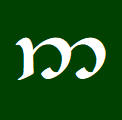8.22 to Dig, Delve Q. felehta- v. “*to excavate, tunnel, mine” An untranslated form appearing in Notes on Names (NN) from 1957 derived from the root √PHELEG/PHELEK (PE17/118), possibly a verb derived from *phelektā- or *phelegtā-. The derivatives of this root had to do with mines and tunnels, so perhaps
Paul Strack
Select Elvish Words 8.12-8.15: Field, Garden, Barn, to Till
ᴹQ. peler n. “fenced field, ⚠️[ᴱQ.] fence” A noun in The Etymologies of the 1930s glossed “fenced field” along with cognate N. pêl, both derived from the root ᴹ√PEL(ES) “revolve on fixed point” (Ety/PEL(ES)). Conceptual Development: A possible precursor is ᴱQ. pelto “hedge, hedged field” from the Qenya Lexicon of
Select Elvish Words 7.45-7.46: Lamp, Candle
7.45 Lamp Q. calar n. “lamp” A word for “lamp” in notes from the late 1960s derived from √kalar- (VT47/13). This word is less well-known than Q. calma “lamp” (LotR/1121). Q. calma n. “lamp, (device for shining) light, ⚠️[ᴱQ.] candle; (day)light” A noun for “lamp” appearing in The Lord of
Select Elvish Words 7.42-7.44: Bed, Chair, Table
7.42 Bed ᴹQ. kaima n. “bed” A noun for “bed” in The Etymologies from around 1937 under the root ᴹ√KAY “lie down” (Ety/KAY). Conceptual Development: In the Qenya Lexicon of the 1910s, ᴱQ. kaima was glossed “couch” under the early root ᴱ√KAYA “lie, rest; dwell” (QL/46) and ᴱQ. kamba was
Select Elvish Words 7.412: Furniture (other)
ᴹQ. farma n. “?carpet” A word in The Etymologies of the 1930s derived from the root ᴹ√SPAR² “strew, spread, ?scatter” with two unclear glosses, one of which might be “carpet” (EtyAC/SPAR²). Its other gloss is even less clear, but might be “string” or “stray” according to Carl Hostetter and Patrick
Select Elvish Words 7.29-7.31: House (other), Fireplace
7.29: House (other) ᴹQ. ampano n. “building (especially of wood), wooden hall, construction, edifice” A noun in The Etymologies of the 1930s glossed “building (especially of wood), wooden hall”, an elaboration of ᴹQ. pano “piece of shaped wood” under the root ᴹ√PAN “place, set, fix in place (especially of wood)”
Select Elvish Words 7.28 Roof
ᴹQ. koromindo n. “cupola, dome” A noun in The Etymologies of the 1930s glossed “cupola, dome”, apparently a combination of variants of ᴹQ. koron “globe” and ᴹQ. mindon “tower” (Ety/KOR). Q. telluma n. “dome, cupola, vault” A word for a “vault” or “dome” in the Namárië poem (LotR/377; RGEO/58). In
Select Elvish Words 7.25-7.27: Window, Floor, Wall
7.25 Window ᴱQ. lattin n. “window” A word appearing as ᴱQ. lattin or lattulis “window” in the Qenya Lexicon of the 1910s, an elaboration of ᴱQ. lat (latt-) “flap, small hinged door, lid” (QL/51). Neo-Quenya: Since I retain ᴺQ. lat (latt-) as a derivative of the later root √LAT¹ “open”,
Select Elvish Words 7.22: Door, Gate
7.22 Door, Gate Q. ando n. “gate, [great] door; †entrances, approaches” A word for “gate”, the Quenya name of tengwa #5 [2] in The Lord of the Rings Appendix E (LotR/1122). Conceptual Development: In the Qenya Lexicon of the 1910s Tolkien instead had ᴱQ. pondo “gate” under the early root
Select Elvish Words 7.21: Room
7.21 Room ᴹQ. kaimasan (kaimasamb-) n. “bedchamber” A word for “bedchamber” in The Etymologies from around 1937, a combination of ᴹQ. kaima “bed” and ᴹQ. sambe “chamber” (Ety/KAY, STAB). Its plural kaimasambi indicates a stem form of kaimasamb-. Conceptual Development: This word first appeared as ᴱQ. {kaitosambe >>} kaimasambe “bed-room”




